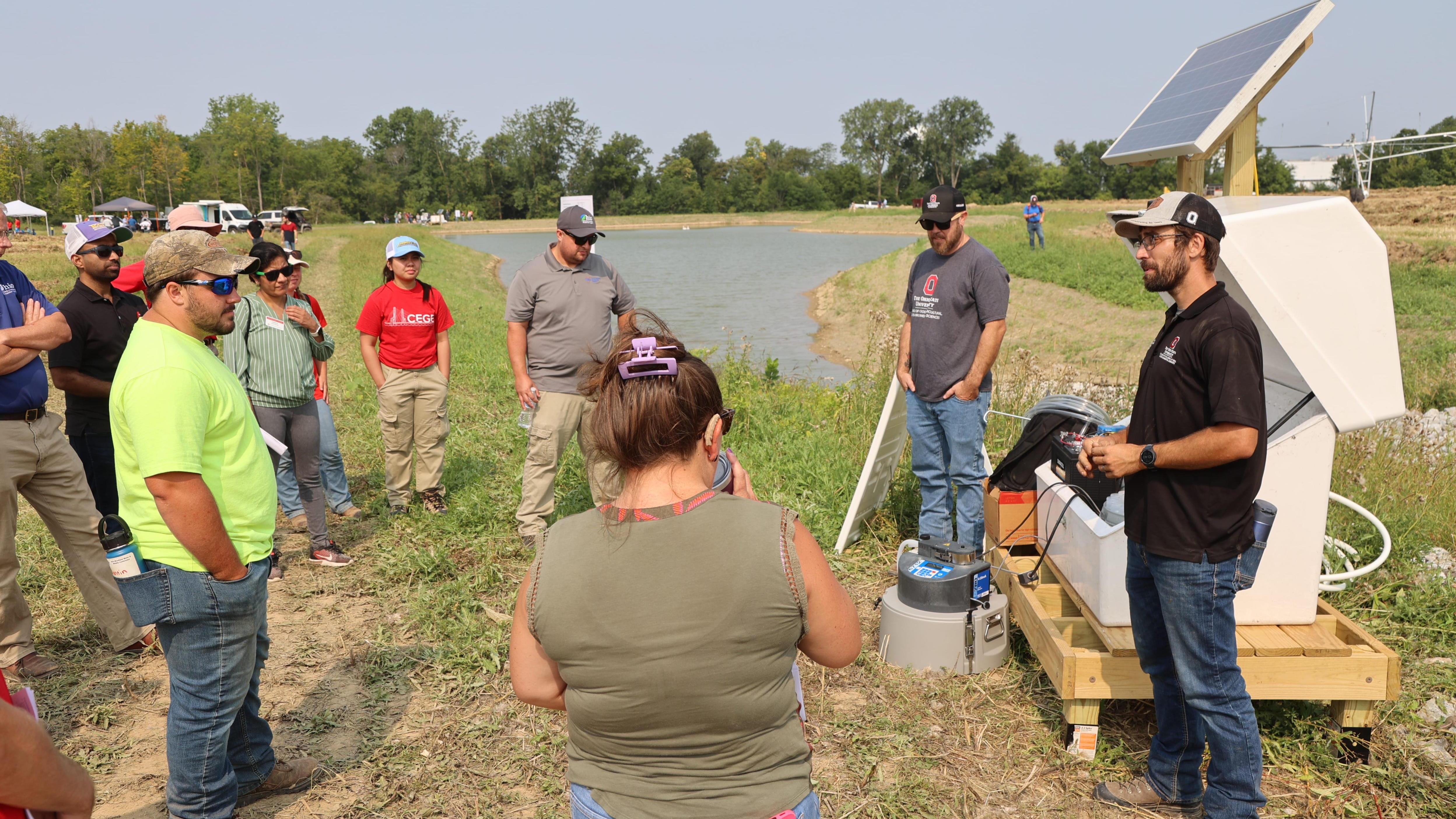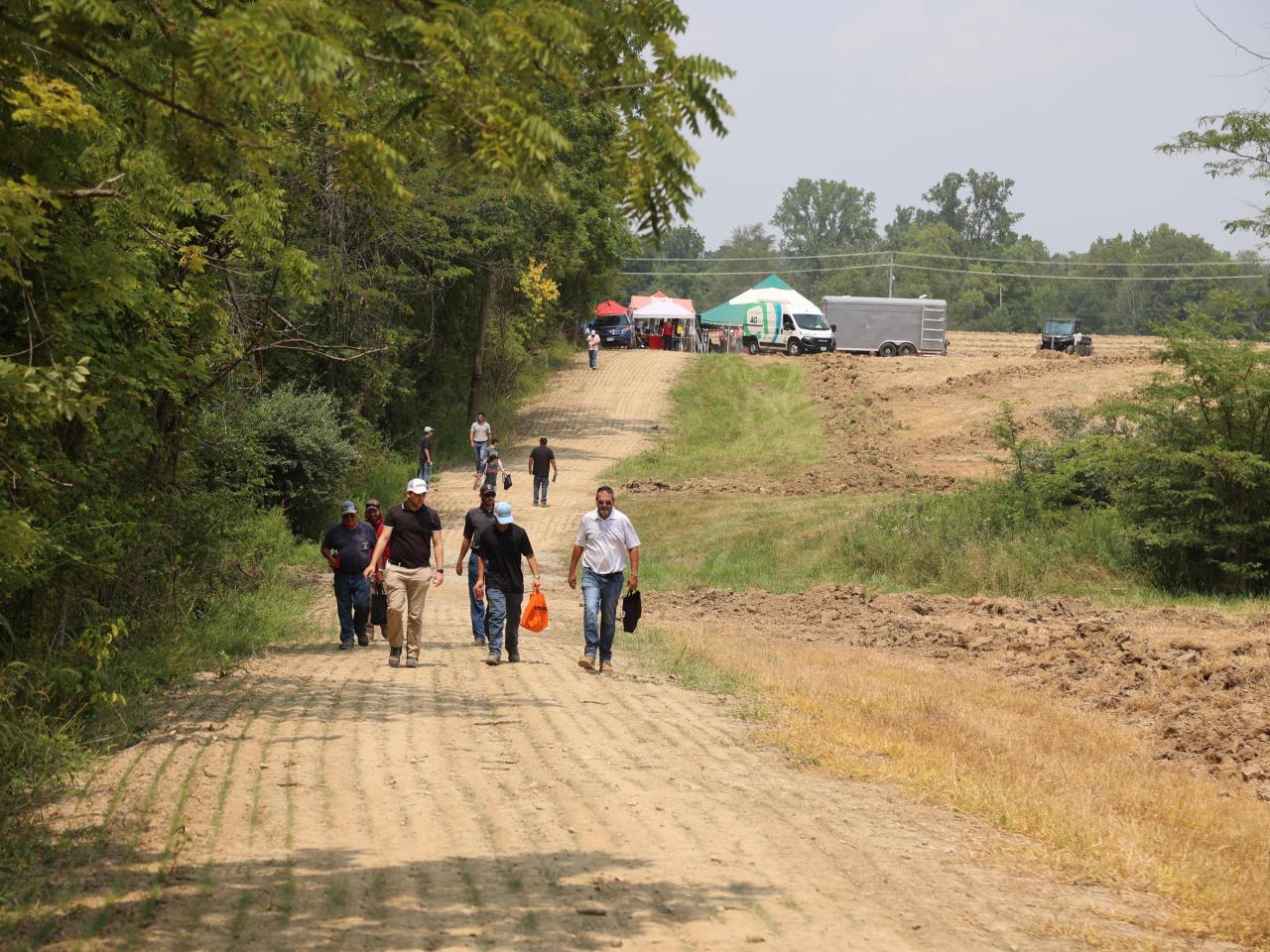The newest pieces of Ohio State Lima’s regenerative farm were on display during the 2024 Drainage Technology and Water Management Field Day in July. More than 150 farmers, industry representatives, students and researchers visited the five information stations and tiling demonstrations in the field and listened to lunch speakers and panelists discussing “Drainage Water Recycling: Water Management for Water Quality and Profitability.”
The 2.6 acre, 5.5-million gallon retention pond completed this year was the most noticeable part of the drainage water recycling project until the new Center Pivot Irrigation system arrived. The 500-foot Valley Irrigation System is clearly visible from Reservoir Road. Using the water collected in the pond and dispensed through the center pivot irrigation system, farmer Todd Mason will be able to apply water when the field crops are in the most sensitive stages of development. The goal is to stabilize higher crop yields over time.
“In July and August our grain crops, corn and soybeans, suffer a natural deficit of about 5-6 inches. But, here in northwest Ohio we don't have adequate ground-water sources to support irrigation demands in late summer. That's why drainage water from non-growing season is a good source of water if you can store it,” said Dr. Vinayak Shedekar, assistant professor of agricultural water management. “About 40 acres drain into this pond and we collect about 5-6 inches equivalent of water coming from this contributing area that can be stored in the pond.”
In addition to the pond and the overhead irrigation system, a 1.5 acre sub-irrigation system will be installed to demonstrate how this less-visible irrigation method works.
The tile demonstrations by the Ohio Land Improvement Contractors of America started in 2022 and will continue through 2026. The systematically-patterned drainage systems will give uniformity to the drainage of fields being used as test plots to compare regenerative farming, conventional no-till and conventional tillage.
“The agricultural fields at Ohio State Lima are typical fields in eastern Allen County. Steep slopes generate excessive surface runoff, and uneven topography causes pockets of wet spots in the spring,” said Shedekar. “The wet spots do not allow for uniform soil moisture conditions and timely planting. In addition to poor trafficability in the wet spots, the excess moisture negatively affects crop yields in those zones.”
Nic Baumer, Allen County ag and natural resources educator with OSU Extension, sees the Lima farm as a one-stop-shop for demonstrating innovative soil health, water management and agronomic practices.
"With this water recycling system, area farmers and others will be able to see how the drainage upgrades and addition of irrigation will change the profitability and usability of the fields over time," Baumer said.


















